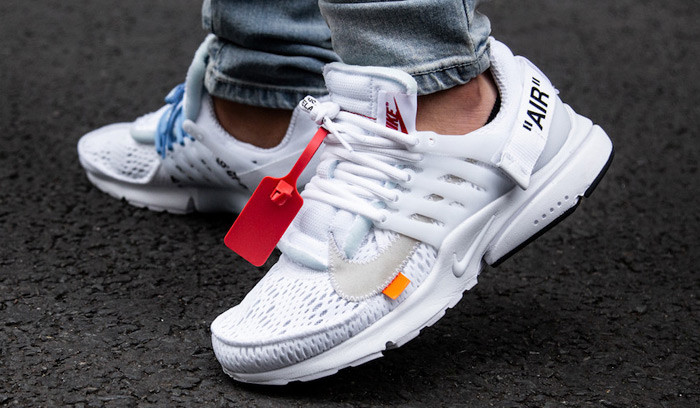
Nike Stock (NYSE:NKE): Can 2025 Mark a Rebound?
New Leadership, Fresh Strategies, and the Road to a Nike Comeback | That's TradingNEWS
Nike (NYSE:NKE) Stock Analysis: The Turnaround Potential Amid Market Challenges
Nike Inc. (NYSE:NKE) has been under considerable pressure in recent months, seeing its share price fall by approximately 24% year-to-date, with a significant 52% decline from its all-time high of $171.71 in November 2021. The key question for investors is whether this decline presents a buying opportunity or if the company’s challenges signal more trouble ahead.
Weak Earnings and Sales Performance
Nike’s recent earnings report for the first quarter of fiscal 2025, which ended on August 31, 2024, painted a bleak picture. Revenue was down 10% year-over-year, and earnings per share (EPS) dropped by 26%. The company’s core issue lies in a shift in consumer spending trends, coupled with an inventory glut that continues to weigh on its profitability. Nike’s wholesale business decreased by 7%, while its direct-to-consumer (DTC) sales fell by 12%, signaling a slowdown in demand. Inventory problems, particularly in North America and China, have further contributed to these difficulties, and the company has also withdrawn its full-year guidance.
Impact of Leadership Change at NYSE:NKE
Nike’s leadership change brings both challenges and opportunities. Elliott Hill, a company veteran, has taken over as the CEO, effective October 14, 2024. Hill’s extensive experience in Nike’s global commercial and marketing operations offers hope that the company can recalibrate and regain its footing. Investors are closely watching Hill’s strategic moves, particularly in driving innovation and addressing the excess inventory issue, which has severely impacted sales.
Product Innovation: A Crucial Factor
A significant issue Nike faces is the slowing pace of product innovation. The company has been criticized for not introducing enough groundbreaking products in recent years, which has allowed competitors like Adidas and Lululemon to capture market share. Recent product launches, such as the Pegasus 41 and Air Max Dn, are part of Nike’s strategy to revitalize its brand. With upcoming releases, including the Pegasus Premium and Zoom Vomero in spring 2025, the company hopes to regain its reputation for leading product design and innovation in the athletic space.
However, Nike’s iconic sneaker franchises, such as Air Jordan and Air Force 1, have suffered from oversaturation. The company is now cutting back on production for these models, aiming to restore their exclusivity and boost profitability. While this move could take time to reflect in sales growth, it highlights Nike's focus on preserving brand value.
Challenges in the China Market
The Chinese market, once a key growth driver for Nike, has become a significant challenge. Weak consumer sentiment and high inventory levels in China continue to hamper sales growth. In fiscal Q1 2025, Nike's struggles in China led to flatlining performance, contributing to the company’s overall revenue decline.
China remains an essential market for Nike, and any improvement in consumer sentiment there could act as a catalyst for the stock’s recovery. However, this is contingent on macroeconomic factors, including local liquidity injections by the Chinese central bank, which aim to stimulate the economy.
Competitive Landscape Intensifies
The competition in the athletic wear space has become increasingly fierce, with brands like Lululemon and On Holding aggressively capturing market share in the lucrative athleisure segment. These companies are targeting the same customer base, intensifying pressure on Nike to maintain its dominance. Furthermore, Adidas’ resurgence with its Samba and Gazelle models poses additional threats to Nike’s market position.
As competitors innovate and expand their product lines, Nike must accelerate its design cycles and release fresh products to retain consumer interest. Without this, the company risks losing further market share.
Valuation and Market Sentiment
From a valuation perspective, Nike’s stock is trading at a forward enterprise value-to-EBITDA (EV/EBITDA) ratio of 21, below its five-year average of 25, indicating that the stock is relatively cheap compared to historical levels. Despite the significant drop in stock price, Nike still maintains a market capitalization of $121 billion, with its price-to-earnings (P/E) ratio sitting at 22.94, reflecting investor confidence in the company’s long-term potential.
Analysts have mixed views on Nike’s stock. For instance, BMO Capital reiterated its Outperform rating with a $92 price target, while Stifel maintained a Hold rating with a target of $79, reflecting concerns over near-term challenges. Meanwhile, BofA Securities issued a Buy rating, forecasting robust sales growth despite a projected 8-10% revenue decline in the second quarter.
For more details on Nike insider transactions, investors can visit Nike Insider Transactions.
Dividend Strength: A Silver Lining
Despite its current headwinds, Nike continues to reward its shareholders through dividends. With a yield of 1.83% and 22 consecutive years of dividend increases, Nike’s strong commitment to returning capital to shareholders offers a level of stability. This consistent dividend policy could help cushion the stock from further downside, especially as long-term investors look for income generation in volatile market environments.
Outlook for FY2025 and Beyond
Looking ahead, Nike’s challenges are expected to persist through fiscal 2025, particularly in the China market and with inventory management. However, the company’s efforts to accelerate product innovation and the leadership change under Elliott Hill may help turn the tide by FY2026. Analysts forecast that Nike’s revenues could grow by 6% from FY26 onwards, driven by new product launches and improvements in consumer demand.
Valuation models, including discounted cash flow (DCF) analysis, suggest that Nike’s one-year target price could reach $98 per share, based on organic revenue growth projections and margin improvements. Nevertheless, this assumes that Nike’s turnaround strategy is successfully executed and that global macroeconomic conditions, particularly in China, improve.
Decision Time for NYSE:NKE
After a prolonged period of underperformance, Nike Inc. (NYSE:NKE) stands at a crossroads. While its current stock price reflects near-term challenges, there are signs of optimism for long-term investors. The leadership transition, combined with an accelerated innovation pipeline and an unwavering commitment to shareholder returns, suggests that the company has the building blocks to navigate its turnaround.
For those willing to look past the short-term volatility, Nike’s strong brand equity and potential for growth make it a Buy at current levels, with a target price of $98 per share within the next year. However, the next few quarters will be crucial to determine if this iconic brand can regain its footing and deliver the growth that investors have long relied on.













